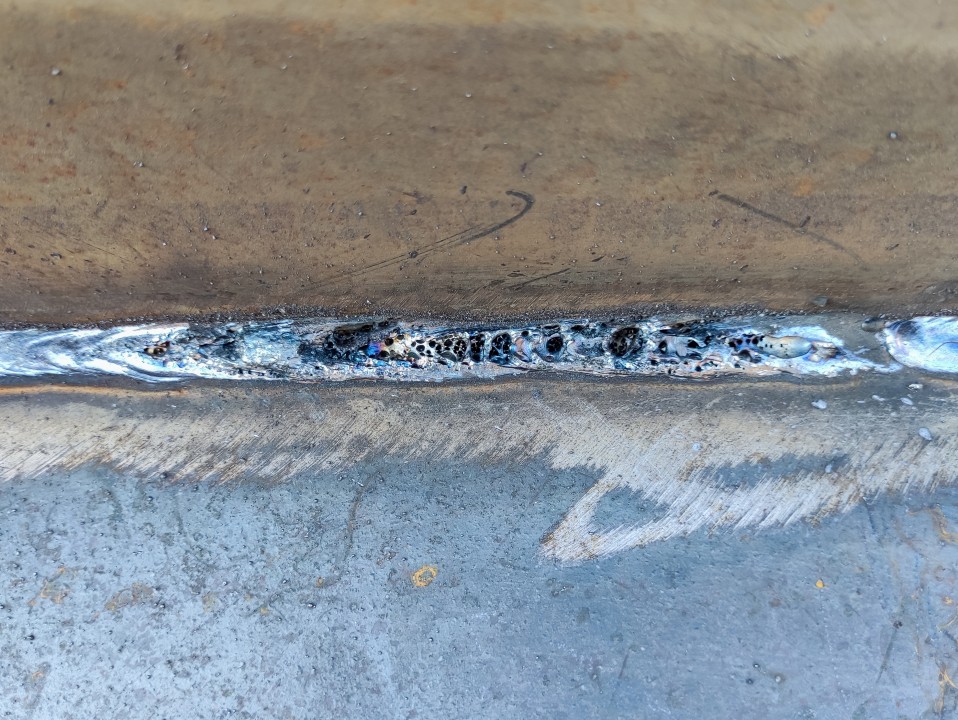Porosity in Welding: Identifying Common Issues and Implementing Finest Practices for Prevention
Porosity in welding is a pervasive concern that usually goes undetected until it causes considerable troubles with the integrity of welds. This typical issue can endanger the strength and sturdiness of welded structures, positioning safety risks and resulting in costly rework. By understanding the source of porosity and applying reliable avoidance approaches, welders can dramatically enhance the top quality and integrity of their welds. In this discussion, we will certainly explore the vital aspects adding to porosity formation, examine its destructive impacts on weld efficiency, and discuss the finest techniques that can be adopted to reduce porosity event in welding procedures.
Common Reasons For Porosity

An additional frequent wrongdoer behind porosity is the visibility of contaminants externally of the base metal, such as oil, oil, or rust. When these impurities are not efficiently removed prior to welding, they can vaporize and come to be caught in the weld, creating issues. Moreover, utilizing filthy or damp filler materials can introduce impurities right into the weld, adding to porosity problems. To alleviate these usual causes of porosity, detailed cleansing of base metals, correct shielding gas selection, and adherence to optimum welding specifications are necessary methods in accomplishing high-grade, porosity-free welds.
Influence of Porosity on Weld Top Quality

The existence of porosity in welding can substantially endanger the structural integrity and mechanical homes of bonded joints. Porosity creates spaces within the weld steel, compromising its total toughness and load-bearing ability.
Welds with high Discover More Here porosity levels tend to exhibit reduced impact toughness and lowered ability to deform plastically before fracturing. Porosity can restrain the weld's capability to properly transfer forces, leading to early weld failing and potential security risks in vital structures.
Finest Practices for Porosity Avoidance
To improve the architectural integrity and top quality of welded joints, what certain steps can be implemented to lessen the incident of porosity throughout the welding process? Utilizing the appropriate welding method for the specific product being bonded, such as changing the welding angle and weapon position, can further protect against porosity. Routine examination of welds and instant remediation of any type of concerns determined during the welding process are essential techniques to prevent porosity and generate top notch welds.
Value of Correct Welding Strategies
Executing correct welding strategies is vital in guaranteeing the structural integrity and high quality of welded joints, developing upon the foundation of effective porosity prevention steps. Extreme heat can lead to boosted porosity due to the entrapment of gases official statement in the weld swimming pool. Furthermore, making use of the suitable welding criteria, such as voltage, current, and take a trip speed, is crucial for attaining audio welds with very little porosity.
Furthermore, the choice of welding process, whether it be MIG, TIG, or stick welding, must straighten with the specific demands of the project to make sure optimal outcomes. Proper cleaning and preparation of the base steel, in addition to picking the appropriate filler material, are also important components of competent welding methods. By sticking to these best techniques, Related Site welders can lessen the threat of porosity formation and generate top quality, structurally audio welds.

Evaluating and Quality Assurance Procedures
Examining procedures are vital to discover and stop porosity in welding, ensuring the strength and sturdiness of the last product. Non-destructive screening techniques such as ultrasonic screening, radiographic testing, and aesthetic examination are typically utilized to identify prospective problems like porosity.
Performing pre-weld and post-weld evaluations is additionally essential in maintaining top quality control standards. Pre-weld examinations entail verifying the materials, equipment setups, and sanitation of the workspace to avoid contamination. Post-weld assessments, on the various other hand, examine the final weld for any type of defects, consisting of porosity, and validate that it satisfies specified criteria. Executing an extensive top quality control plan that consists of thorough testing procedures and examinations is extremely important to lowering porosity issues and making sure the general top quality of welded joints.
Verdict
Finally, porosity in welding can be a typical issue that affects the high quality of welds. By determining the common sources of porosity and applying finest techniques for prevention, such as appropriate welding methods and screening procedures, welders can guarantee top quality and trustworthy welds. It is important to focus on avoidance methods to lessen the incident of porosity and maintain the stability of bonded frameworks.